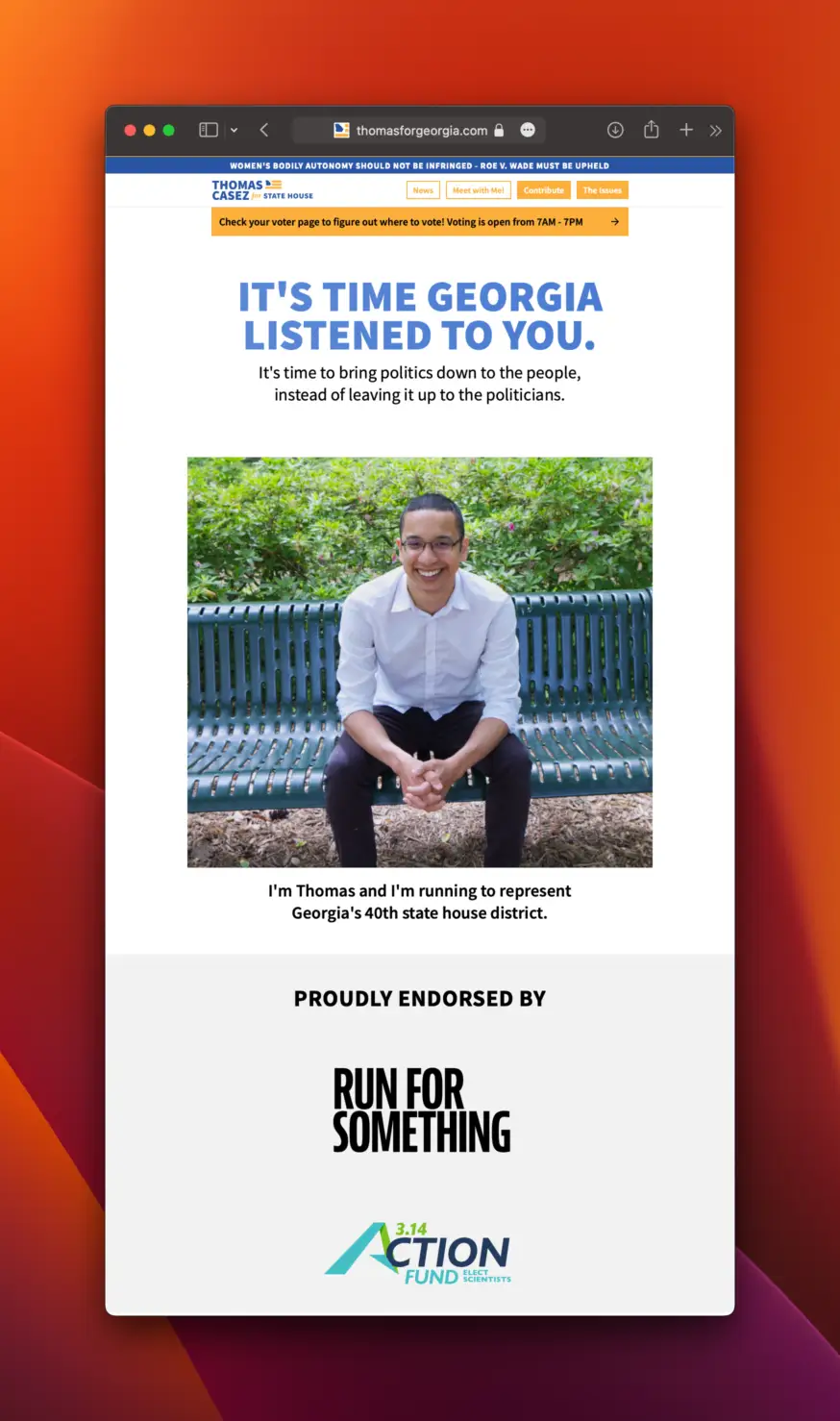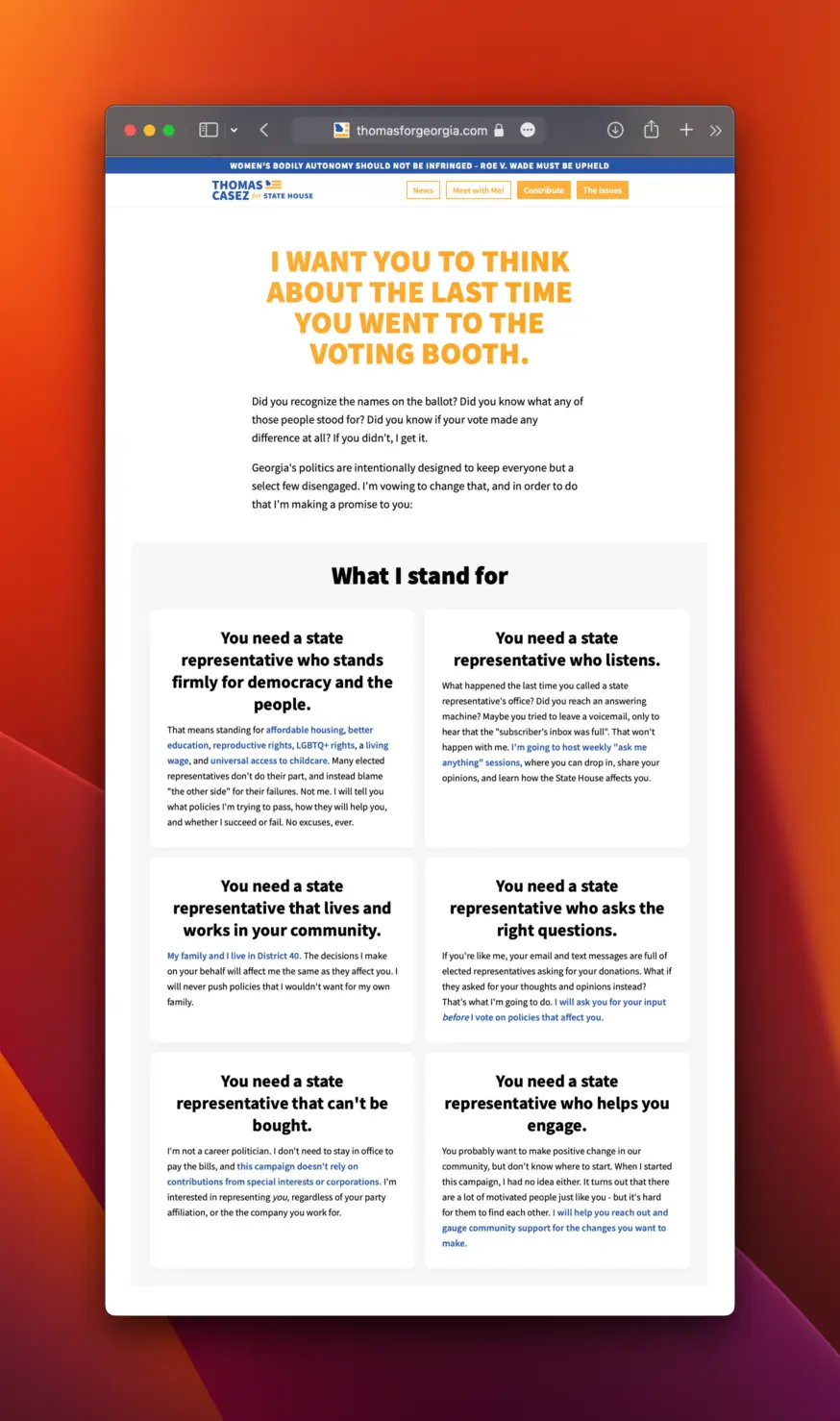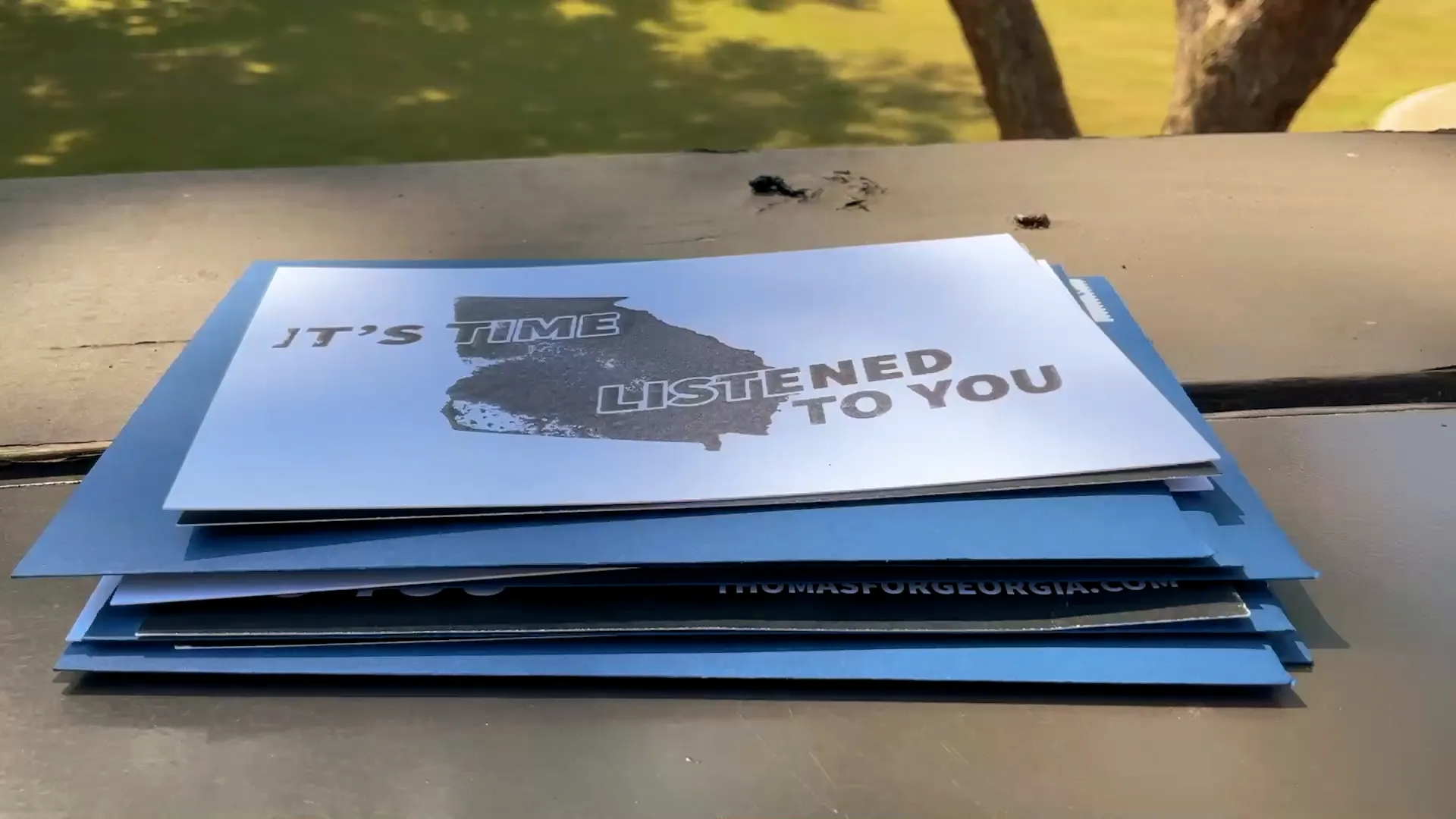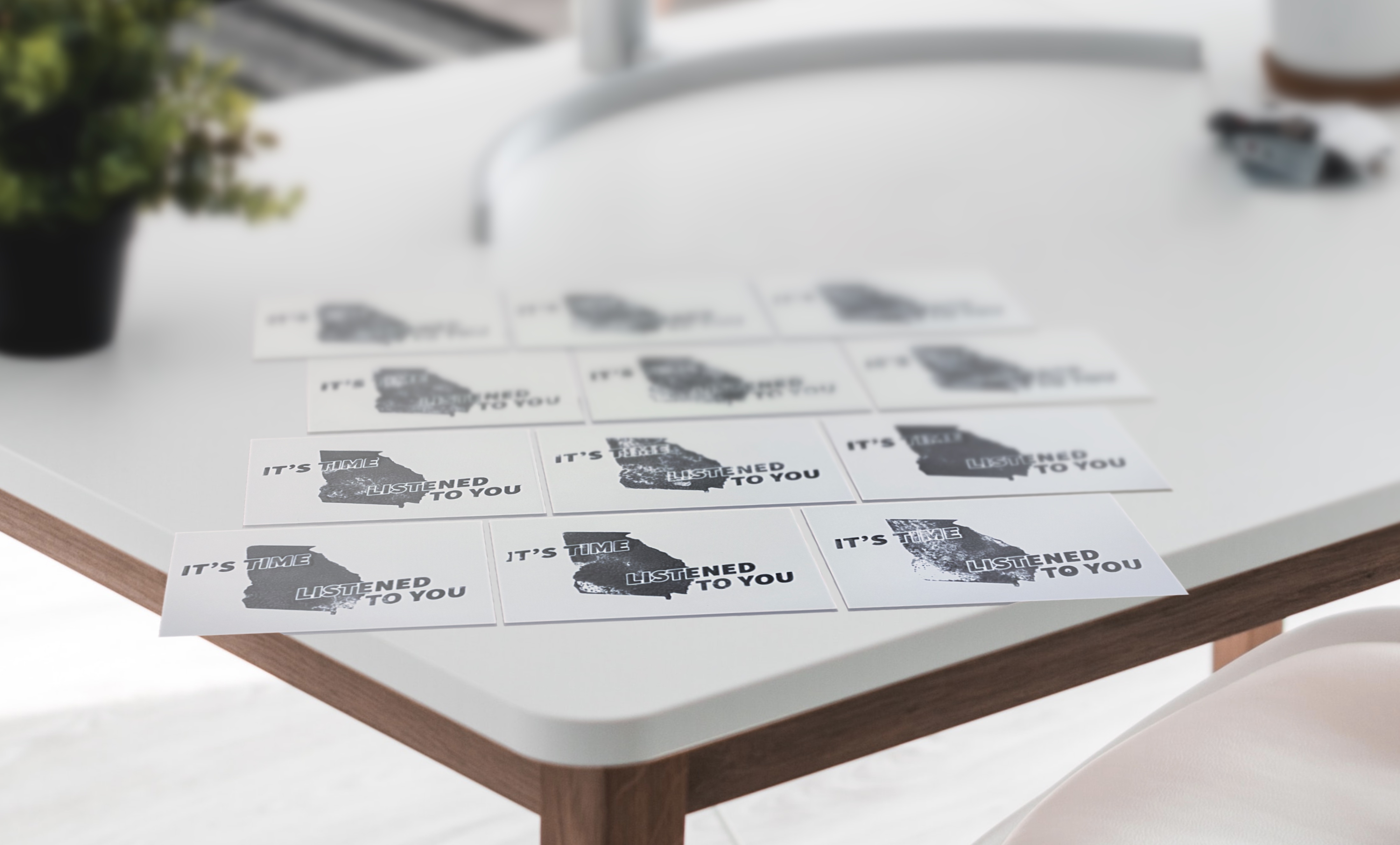
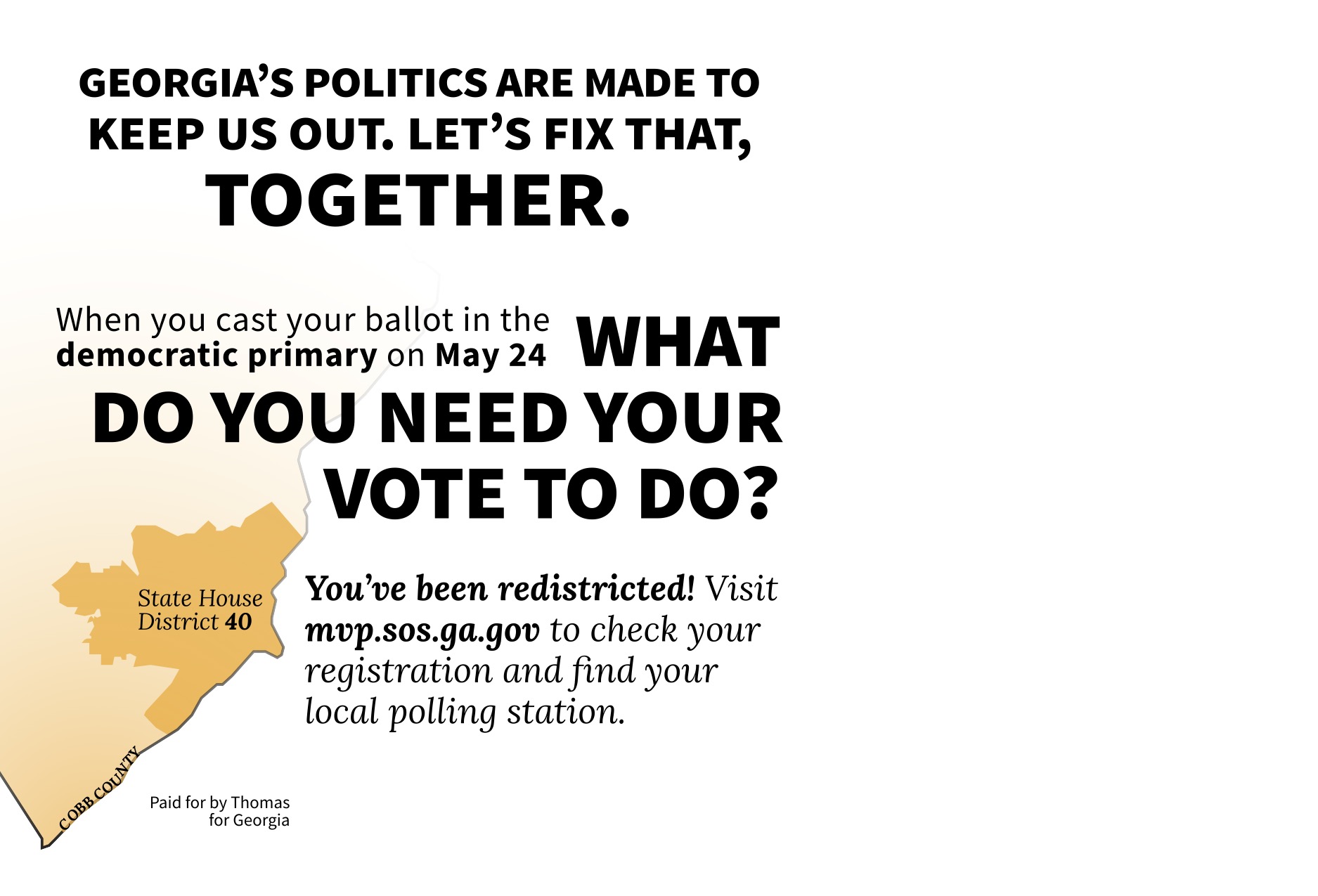
Thomas for Georgia
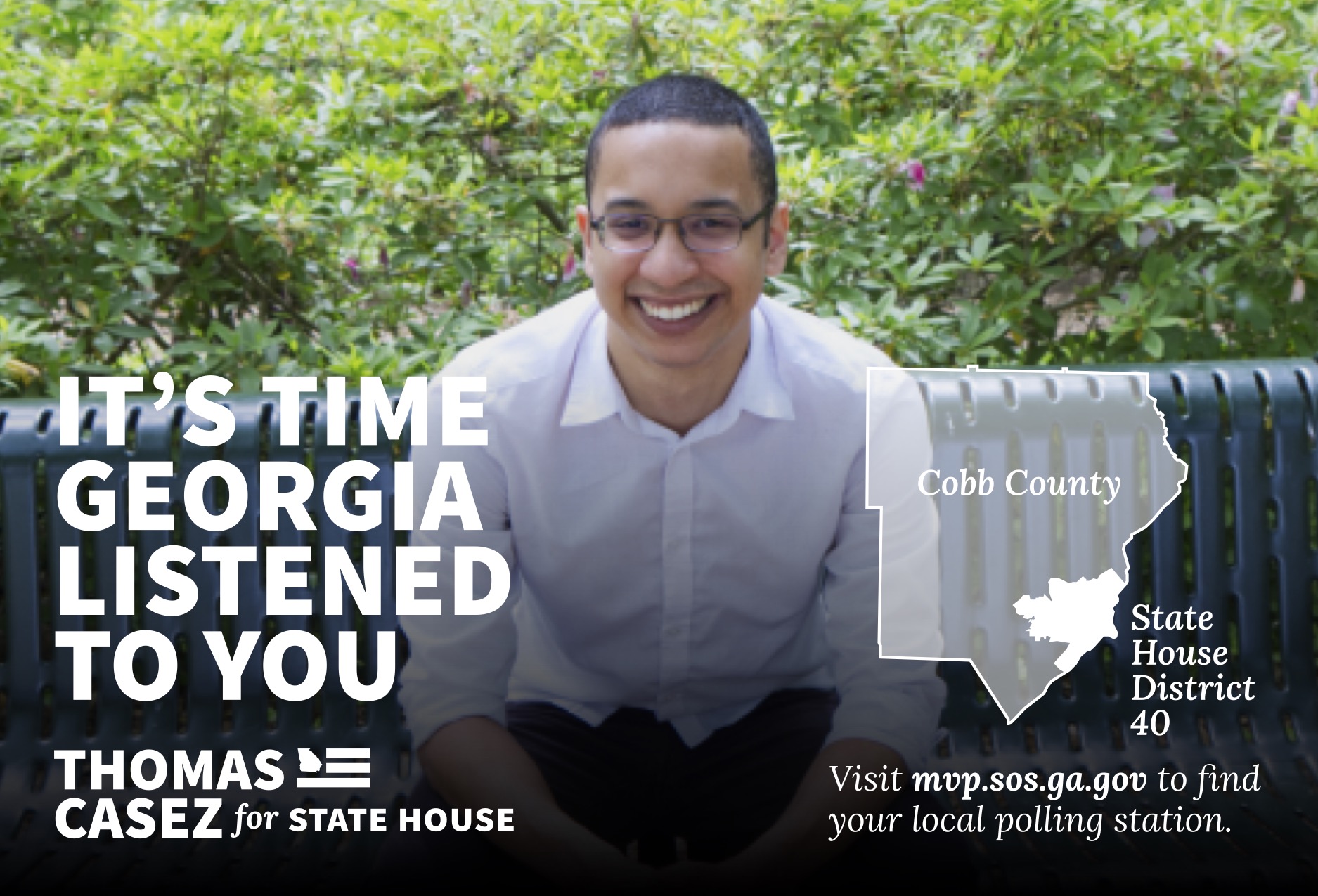
Tools
Figma, Adobe Creative Suite, Node.js, Javascript, Vue 2, HTML5, CSS
Techniques
Campaign Management, Message Testing, Graphic Design
Process
Who was the client?
Thomas Casez is a Democratic political candidate who wants to represent his neighbors in Smyrna and Vinings, GA. He’d just filed his intent to run for office.
Thomas noticed a disconnect between politicians and people. He was frustrated with voter apathy, but even more frustrated with politicians who admonished their constituents for staying home on Election Day. How did they expect things to change for the better if they didn’t actually listen to their constituent's needs, let alone do anything worth voting for?
Thomas wanted to get away from the typical government dysfunction. And he had a theory that his district’s constituents felt the same way. He knew they needed something new, different and fresh.
Why did they need my help?
With just three months until election day, he needed a marketing campaign. He had to reach out to the local 5,000 voters in Smyrna, and ask them for their vote in the upcoming primary election.
He was also a newcomer. He’d just moved to the district two years ago, whereas his opponent had lived there his whole life. The primary opponent had deep roots in the district, and even deeper pockets as a party insider with six times the campaign resources.
Thomas needed a way to gain people’s trust, fast. He needed voter outreach on a large scale, with a tiny pool of volunteers. But it would be impossible to meet all 5,000 registered voters who were likely to go to the polls. He needed a way to talk to the few people who’d talk about him to their neighbors, and boost his name recognition.
How did I help them?
A nurture campaign is like a dialogue with the people you want to serve. We used it to find out what topics mattered to voters. We started the nurture campaign by mailing postcards to a random sample of 2500 likely voters. Then we visited as many as we could in person. After each visit, we sent a combination of mailers and handwritten notes, and told them how to vote for Thomas. The postcards had a brief introduction to Thomas, and a simple question: “what do you need your vote to do?” We knocked on 1500 doors over the span of 12 weeks, and had over 300 conversations. That’s an answer rate of 20%, which is on par with the national.
Unlike most direct-voter-contact operations, we didn't use the same recycled talking points. All we did was reiterate the question in the postcard: “what does your vote mean, and what would you like it to do?” The answers were fascinating and varied. Most of the primary democrat voters in the district didn’t really think that their vote would actually affect change. Many were burnt out on politics after the 2020 general election. They voted, they donated. And yet no one had bothered to ask them what was important to them.
We took everything we learned from the nurture campaign, and wrote a compelling stump speech. Thomas delivered his speech to the Cobb Democrats in early April to thunderous applause. That’s when the campaign really started to take off. We posted the speech to social media and larger donations started to roll in.
Following the success of the speech, we repacked its key points into a drip campaign: a series of mailers, flyers, social media posts, and text messages. These were aimed at all 5,000 likely primary voters in the district. The postcards summarized Thomas's voter-friendly policies, such as a $15 minimum wage, universal access to childcare, upholding the right to a safe abortion, and most importantly, his open-door policy. He wanted to make sure his voters could schedule personal meetings with him to talk about the issues.
What were the results?
In the week prior to election day, it was hard to find a likely voter who hadn’t heard of Thomas. The drip campaign had already paid off.
Election night was a nail biter. We had no idea if we stood a chance against a well-known local politician. We had been outspent 6-to-1, and there was no way to predict who all would show up. But the lines were much longer than expected at early voting. After hearing Thomas's message, 2115 people responded. People love to root for the underdog.
A little over 40% of the district chose the newcomer over the veteran politician. Most first-time politicians manage a small fraction of that turnout. Our nurture campaign and drip campaign was dollar-for-dollar 3.8x as effective as the primary opponent’s campaign. We had managed to turn out 2,115 people on a shoestring budget of around $10,000 - a budget that was entirely free of corporate donations.
It was a huge win to be able to mobilize a community. Thomas considers this outcome a massive success, because with more funding, next time we can easily scale further on a shorter timeline. Our success came down to the voters who showed up. These were the folks who really took an interest in what we wanted to do. Because we wanted to do more than just marketing, or just messaging: we wanted to listen.
